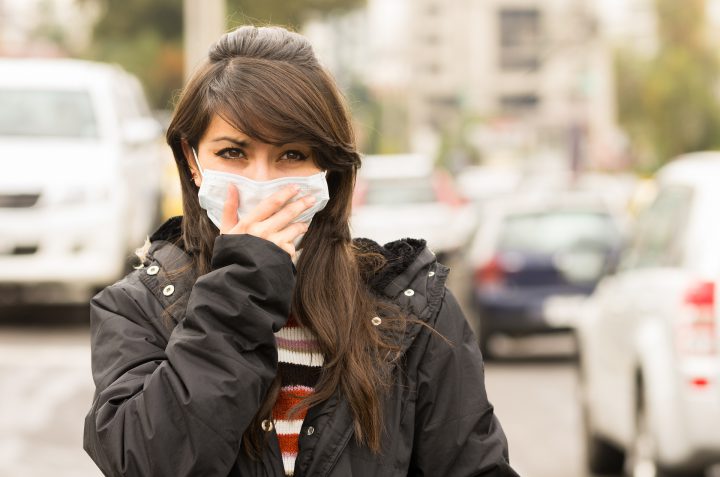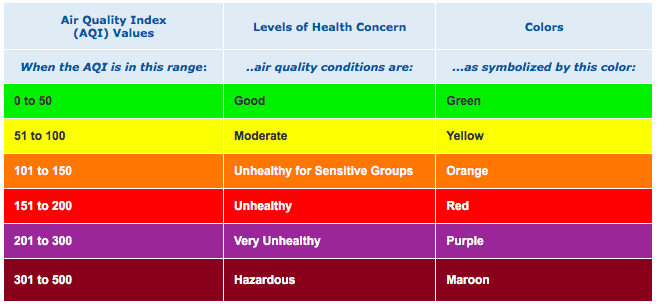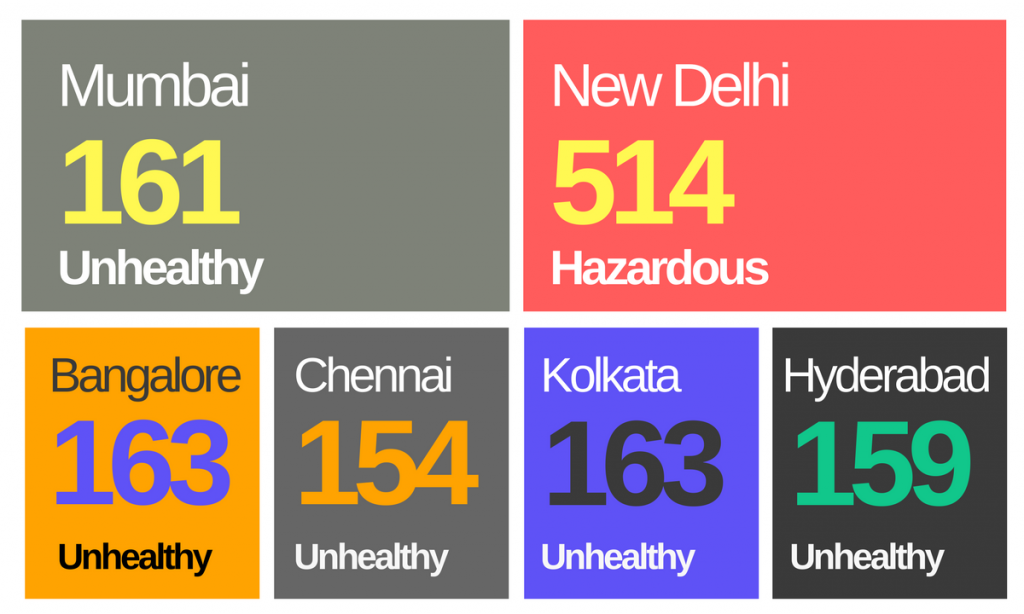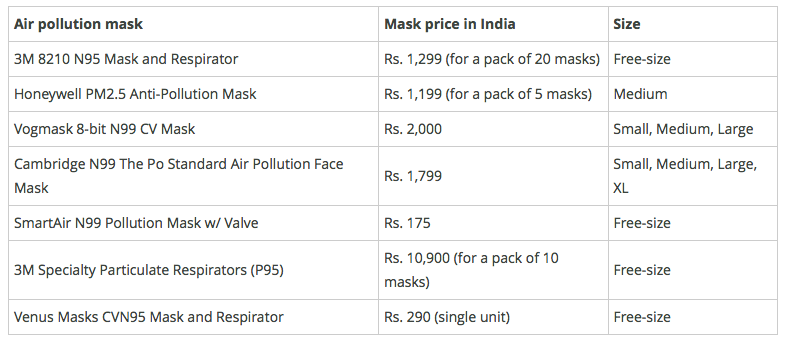Around the planet, June 5th is celebrated as World Environment Day.
 It is a little sad that air pollution generally does not receive due attention unless there is a national level festival. During festivals, news feeds, TV screens and public service messages tell us to wear pollution masks to stay safe. But on any given day, we choose to conveniently ignore otherwise stark facts.
It is a little sad that air pollution generally does not receive due attention unless there is a national level festival. During festivals, news feeds, TV screens and public service messages tell us to wear pollution masks to stay safe. But on any given day, we choose to conveniently ignore otherwise stark facts.
This World Environment Day, we will explain why it makes sense today to wear a pollution mask all the time. But before that, let us cover the basics of what you should and should not be doing, especially if you do not like the idea of having to cover your face every time you step out.
What can you do to save the environment today?
- Remember to conserve energy – Turn off lights, computers, and electric appliances when they are not in use
- Use energy-efficient light bulbs (LEDs) and appliances that promote energy consumption (check for appropriate star ratings)
- Use public transport, switch to cycling and walking whenever possible
- When using a personal vehicle, try to combine your tasks to make fewer trips. Always keep your automobile well-tuned and maintained. Follow maintenance instructions (such as changing the oil and filters, and checking tyre pressure) to avoid excessive fuel usage
- Avoid using plastics and other non-biodegradable material in your daily routine
Don’t let the story end. Save the planet one step at a time, and ensure that the world is good enough for future generations to live on.
The current air pollution hazard
The reason why air pollution gets highlighted during festive seasons, is because the level of pollutants such as SO2, NO2 and other airborne particulate matter (smaller than 10μM) is 2 to 6 times higher than “regular” levels. And while such warnings serve well for people with a history of asthma and other allergies, the “wear a mask selectively” strategy is not a holistic approach towards breathing healthy. To understand this in detail, we need to understand what Air Quality Indices are, and how these levels affect us and the need to wear masks.
Air quality indices
An Air quality index (or AQI) is a scale that measures the direct impact of the air around us, on our health. This scale was developed to help us in making informed health decisions by limiting our exposure to air pollution. It acts as an alert for us to adjust our outdoor activity levels, and warns us when it is time to step up our prevention methods (such as pollution masks, air filters, and more).
The index pays particular attention to people who are sensitive to air pollution, (or people who are allergic to specific airborne pollutants), and provides helpful advice on how to protect their health during air quality levels associated with low, moderate, high and very high health risks.
AQI Categories
The Air quality index at any given point of time for a specific city, can indicate whether the breathing conditions are good, moderate, unhealthy for sensitive groups, unhealthy, very unhealthy or hazardous>. The environmental protection agency Airnow.gov has defined a numeric categorization for the same, listed below:

Who uses AQIs?
AQIs are perpetually used by international diplomatic agencies to keep a check on the quality of air in various Indian metropolitan cities. A good example of such measurement, is the availability of AQI data in all cities where US consulates are located. In order to ensure that all US dipomats are protected against the dangers of air pollution in Indian cities, these levels are regularly monitored and published for cities such as Mumbai, New Delhi, Bangalore, Kolkata, Hyderabad and Chennai.
Air quality indices for Indian metros
To serve as an indicator of how far we are from the truth as far as daily pollution levels are concerned, this is a snapshot of the AQIs published for US Consulate locations at New Delhi, Bangalore, Mumbai, Chennai, Kolkata and Hyderabad on a Monday morning (9:00 AM Data collected on 5th March, 2018).

Wait. Are you saying that air pollution can cause cancer? Like, cancer cancer?
Before answering that, let us just revisit the numbers and charts above and observe one little point of amazement. Note that the AQI scales just define categories ranging from “Good” to “Hazardous” on a scale of 1 to 500. Last Monday morning, Delhi was at 514. That means we just broke the scale!
Okay, back to the question on cancer
Air pollution breaks down into a floating combination of particle dust, second hand smoke, exhaust smoke (fumes from vehicles), and smoke from burning fuels. It is often separated into outdoor air pollution and indoor air pollution. It is important to note that both of these categories have been shown to increase the risk of Cancer.
Air pollution is generally associated with an increased risk of Lung Cancer and other types of respiratory diseases. In 2013, the International Agency for Research on Cancer (IARC) brought together a panel of experts to review the effects of outdoor air pollution on Cancer. The panel concluded that there was enough evidence to suggest that outdoor air pollution can cause Cancer in people.
More specifically, they confirmed that a part of air pollution, known as PM 2.5 (solid dust-like particles, or ‘Particulate Matter’, less than 2.5 millionths of a metre in size) can cause Cancer.
Note: You can read the complete findings of this study here.
We already know that cancer is a result of multiple genetic mutations caused by both inherited factors and environmental exposure towards carcinogens (cancer-causing agents). Consequently, it is critical that we limit our exposure towards the hazard of cancer-causing pollutants in the air.
Masks, masks & masks
Last Diwali, almost all of Delhi was raving about masks, with people on the news talking about why it is sacrosanct for all citizens to wear a pollution mask during their daily commute, especially with the country’s capital falling under close scrutiny for its high pollution levels. Keeping in mind the data we have shared above, the same logic applies to everyone, every day, irrespective of which city you live in. Masks don’t just protect you against cancer, they serve to keep you safe against a host of dust-driven allergies and respiratory functions.
But.
What mask is right for you?
Choosing a mask for your daily use is not as fun as lets say, choosing a cap on your favourite online shopping portal. User reviews are scarce, and these are not big brands promoting the nitty-gritties of their products the same way a sports giant advertises their merchandize. To make this choice simpler, we are exploring the different types of masks available in medical stores and other relevant outlets.
Masks by appearance
- The simple flat mask (also known as a surgical mask). Don’t buy this, this does very little to protect you against pollution.
- The “Respirator” – This is a more sophisticated, anti-dust, anti-particulate device, seen mostly as worn by traffic policemen and tourists. These are much more effective against particulate and smoke-based pollution.
- Gas-masks – These are the post-apocalyptic gas masks/respirators, famously seen in the TV series “Breaking Bad”. If you can afford these, go for it. Although, it might look a little weird in public!
Masks by specifications
If you happen to live in a city with access to a decently educated pharmacist, we recommend that you ask to buy a pollution mask as per defined industry criteria. Masks that can help you stay safe against cancer-causing PM2.5 pollutants are mainly listed as N95, N99, N100,P95 and R95 masks. Popular health-tech brands such as 3M, Honeywell, Atlanta Healthcare Cambridge Masks™, Respro®, Vogmask and Totobobo sell these masks in India.
N-95 and N-99 respirators should be the minimum criteria when selecting a mask for your daily commute in an Indian metro. To understand these standards better – the numeric prefixes/codes represent the particle filter class of each mask. For example, an N-95 respirator can filter out 95% of particulate matter (PM2.5) while an N-99 respirator is incrementally better because it filters 99% of particulate matter.
Compared to N-rated masks, P-rated masks are more effective because they can filter out oil-based pollutants too. R-rated masks have the highest filtration capacity, but they are generally used in heavy industrial environments (This is the Breaking Bad/Gas Mask category).
Price point indicators
Please note that this indicator for price points of pollution masks in India was first published in a survey by NDTV Gadgets, and does not represent the opinions/affiliations of Onco.com as an organization. These are purely for reference, and we recommend that you conduct a thorough personal study before investing in any product suggested herein.

Beyond masks?
This video on YouTube explains very simply, how masks and other preventive measures can be effective in your strategy to combat pollution and stay cancer-free.
So, what are you waiting for? cancer is not going to wait for you to get smart! This World Environment Day, don’t sit around and wait for the next festival to invest in an air mask. Buy one tonight and wear it to work tomorrow. And while you’re at it, share this article with your friends?


